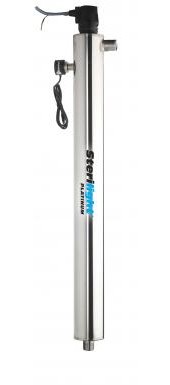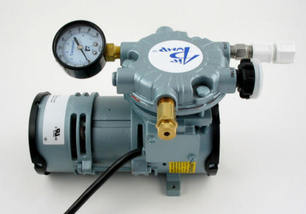Water Topics from the Pure Water Gazette
Editor’s Note: Below is the current issue of the “paper Gazette.” It’s a two-page paper publication that we issue locally and sometimes put into packages. –Hardly Waite.
Wealth, Morality, and Water
Evidence suggests that above a very low level of income, economic growth benefits other species and the condition of a nation’s water. In general, as people get richer, they start behaving better toward other species. Likewise, as economic standards go up, countries get cleaner, more peaceful, more urban, more efficient, and better informed. Their people also have fewer children. Other species and the environment both benefit from these changes. In the United States, economic sufficiency has allowed us to maintain a system of water quality standards much higher than that of poorer countries. In other words, economic development may pollute water, but it also provides the means and the will to create and maintain water standards.
Not All Pipelines Leak Oil
In September of 2013 a pipeline owned by shipping magnate Matson carrying molasses from Hawaii to cargo ships leaked an estimated 233,000 gallons of dense, sticky molasses into Honolulu Harbor. Although thousands of fish were killed, a molasses spill in no way approaches the severity of an oil spill. This is because while oil and water don’t mix, oil and molasses do. The dense liquid sinks to the bottom of the ocean and is eventually dissolved into water. The company had an action plan for dealing with an oil spill but not a molasses spill. The worst molasses spill in history, by the way, was the so-called Boston Molasses Disaster of 1919, when a huge storage tank exploded on an unusually warm January day, flooding the streets of Boston with 2.3 million gallons of molasses. Nineteen people and numerous horses died.
One-fourth of all fresh water used in the United States goes for what?
An amazing fact: About a quarter of all fresh water used in the United States goes into the making of food that is thrown away. Amazing fact #2: Americans throw away 40 percent of the food they buy. An even more amazing fact is that a large part of the food that we throw away is tossed out simply because Americans do not understand the expiration dates that manufacturers label food with. The expiration date is not a mandate that the food is unsafe for consumption past the stated date; it is, actually, nothing more than an inventory control device that manufacturers put on the product for their own convenience. And it is, in fact, very convenient for Jiffy when you throw out your jar of perfectly good and safe peanut butter at the date on the label and buy a brand new jar.
Air Is a Powerful Water Treatment Tool
Many chemicals are used to treat water. You may not know that plain old air rivals many powerful chemicals like
chlorine in treating some of the most difficult well contaminants–iron, hydrogen sulfide (rotten egg odor), and manganese. Like chlorine, air can be a powerful “oxidizer” to prepare these contaminants for filtration. Air can be introduced into water by a pump, like the small compressor shown above, are it can be sucked into the water by energy created by the flow of the water itself. The powerful oxidizing for of air causes the contaminant to take on a form that can be easily trapped by a filter.
Did Water Shortages Cause the Civil War in Syria?
Drought and chronic water shortages played a significant role in sparking Syria’s civil war and in unrest throughout much of the Middle East, water experts now believe.
Around the world, water demand already exceeds supply in regions with more than 40 percent of the world’s population. That may climb to 60 percent in the coming decade.
Water-scarce regions like Syria can’t grow enough food to feed their own people,
About 70 percent of the world’s freshwater – and up to 95 percent in some countries – is used for irrigation. There is intense competition for freshwater between municipal, industrial, and agricultural uses. Increasingly, agriculture has been losing out, particularly in water-stressed regions.
Between 2006 and 2011, up to 60 percent of Syria’s land experienced its worst ever drought and a series of crop failures. In 2009 over 800,000 Syrians lost their livelihoods and fled to cities as result of the drought.
Chlorine and Chloramine
Since the early 1900s cities have put a disinfectant in their water to prevent illness. The most commonly used disinfectant is chlorine, but more cities are turning to an alternative called chloramine, which is a mixture of chlorine and ammonia.
Chloramine has been used since the early part of the 20th century, but it is still often controversial when a city adopts it. Cities turn to chloramine primarily because it helps them stay within certain EPA requirements for cancer-causing chemicals. Opponents argue that it is toxic to fish and dialysis patients and that many individuals appear to be highly allergic to it.
One persistent myth about chloramine is that it cannot be removed from water. Actually, chloramine is removed by carbon filtration, just as chlorine is, but it is much more difficult to remove, so larger filters and a slower flow of water are usually necessary. Most high quality drinking water filters and reverse osmosis units remove chloramine easily. There is also a specialty carbon called catalytic carbon that is especially good at chloramine reduction.
Cancer Villages in China
In some parts of China, water quality is so bad and cancer rates so high that a study has identified and designated more than 247 communities as “cancer villages.” The villages have in common the proximity of such industries as paper mills and oil refineries. Although many of the industries have closed, untreated domestic sewage and industrial waste pollute local rivers and groundwater.
Arsenic in US Water
Natural arsenic contamination of US drinking water was once considered fairly rare and insignificant. It was also believed that although arsenic was lethal in high doses, exposure to small amounts was of no consequence.
Opinions have changed. A number of studies suggest that arsenic is an astonishingly versatile poison, able to do damage even at low doses. Chronic low-dose exposure has been implicated not only in respiratory problems in children and adults, but in cardiovascular disease, diabetes andcancers of the skin, bladder and lung.
Trace amounts in the body interfere with tumor-suppressing glucocorticoidhormones, studies show, which is one reason that arsenic exposure has been linked to a range of malignancies. Arsenic also interferes with the normal function of immune cells. It damages lung cells and causes inflammation in cells in the heart. In countries like Bangladesh where water is often naturally high in arsenic, it is not uncommon for the ability to take in oxygen of “normal” people to resemble that of long-time smokers.
Arsenic is removed from drinking water by reverse osmosis and and by a number of specialty filters.
“Flushable” Wipes Should Never Be Flushed
The “flushable” label simply means that they will go down your toilet when flushed. It does not mean that they will not do much harm to the sewage treatment system.
Unlike toilet paper, disposable wipes, even those labeled “flushable,” do not break down quickly in water as does toilet paper. Wipes have a long lifespan, and they clog personal and public piping, leading to expensive repairs, and they damage pumps and other parts of the sewage treatment system.
Only human waste and toilet paper should be flushed down your toilet.
Ultraviolet Is Getting Popular with City Homeowners
Ultraviolet light (UV) has for years been a popular alternative to chemical disinfectants like chlorine am

ong well owners. UV is not “just as effective” as chlorination; it is more effective. UV protects against giardia and cryptosporidium, for example, cysts that exist in city as well as well water than are not easily controlled by chlorination.
UV is now becoming much more common in city water applications. As water infrastructure ages and breaks in pipes and “boil water” alerts become more common, city water users are adding UV as a final barrier of protection .
Please visit our main website for more information about UV.





